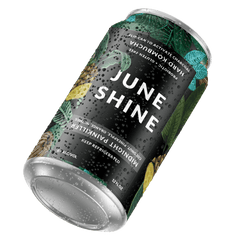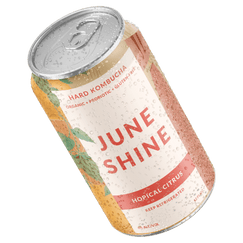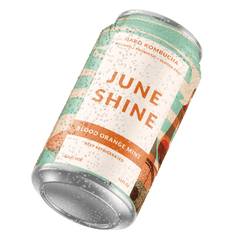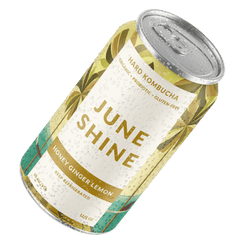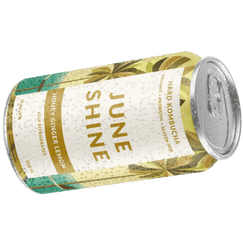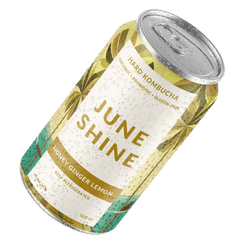What Non-GMO Means and Important Considerations for Grocery Shopping

Think about the last meal you ate. There’s a good chance it contained ingredients that were genetically altered. From bacteria used in yogurts to the plethora of products containing corn, over 70% of the foods in grocery stores contain some sort of genetically modified organisms (GMOs).
Since it’s so easy to pick up foods from the grocery store, you may not stop and carefully study their ingredients as often as you’d like to. Chances are, you want to make informed decisions about your food and drink, but life gets busy.
Let’s take a peek into what it means when foods are genetically modified and how that affects humans and our environment.
GMO Basics
Any organism with artificially altered genetics is considered to be genetically modified.
In 1982, the first genetically modified product was approved. With diabetes becoming more prevalent in the world population, artificial human insulin was approved for use by the FDA (Food and Drug Administration). It was a necessary, helpful invention for millions of people.
Not long after, scientists and farmers discovered that using this same technology could bring higher yields for crops and food products with a longer shelf life. In addition to these benefits, the product could be sold to consumers for a lower price. It seemed like a win-win for everyone.
Nature is always evolving in pursuit of survival of the fittest, and the strongest, most dominant trait prevails. When natural selection occurs in nature, the food chain typically benefits.n However, when the material is artificially changed, it can disrupt the flow of nature, and that’s when trouble starts to arise.
You might be asking yourself why this technology exists if it has such harmful consequences. In genetically modified organisms (GMOs), the DNA structures are altered to increase production, decrease prices, provide higher nutrients, and highlight favored traits of the most successful breeds, such as color and taste. Equally as important to farmers, genetically modified crops can withstand pesticides and herbicides without being harmed.
Take apples. Over ten billion pounds of apples are consumed each year, but they often turn brown once cut into or are bruised in transit. That’s a lot of demand, and there isn’t always the same level of supply available.
If an apple crop is genetically altered, it can produce more fruit at the time of harvest. These apple trees also bear larger, tastier fruits, show brighter colors, and resist turning brown or bruising.
GMO Products in the U.S.
The amount of genetically modified crops in the United States is constantly growing, as demand is high, but supplies are not as plentiful. In order to fulfill consumer wants, the world’s food industry is relying more on genetic modifications. Here are some of the most commonly biologically modified products in the United States.
- Corn
- Soy
- Cotton
- Canola
- Potatoes
- Dairy
- Yeast and Bacteria
- Beef
- Fish
Dangers of GMO Ingredients
While there are benefits to modifying genetics, some are afraid the risks outweigh the good. Some, but not all, GMO foods have been tested on animals. They have not studied the effects on humans, but the animal findings were not promising.
Additionally, with their resistance to pesticides, genetically altered crops are actually causing an increase in the number of toxic chemicals used in agriculture.
Dangers to Humans
The implications of GMOs for humans have not been explicitly studied, but there are many theories regarding their potential damage to people. Some researchers believe there is a link between modified ingredients and cancer in humans. They argue that since cancer is known to present itself because of mutations in DNA, it is dangerous to introduce new genes to people.
Medical experts also fear that modified food sources could be linked to immune issues in humans. Increased allergies, chronic illnesses, and reproductive issues are all suspected to be linked to these food changes. Also worth noting is the recent antibiotic resistance seen in people due to ingesting chemical-resistant foods.
Organ functions are also under question when studying the effects of GMOs on human health. Some studies have shown problems with the pancreas and liver that could potentially be linked to GMOs.
Dangers to Wildlife
Genetically modified foods may be resistant to pesticides, but wildlife is not. Where there are crops, there will be wildlife looking to forage. When they forage on chemically treated or genetically modified plants, the high toxin levels can be fatal to the animals.
One of the biggest concerns of modifying genetics in foods is its effect on the food chain. Concerns have grown regarding fertility issues and whether the modified DNA is passed on to the animals ingesting the foods.
The jury is still out on GMOs. No conclusive studies have proven or disproven these concerns regarding effects on humans and animals, so it’s up to us to make our own decisions.
Considerations When Grocery Shopping
Next time you go to the grocery store, take a look at the food labels. You will be amazed at how many products have corn or soybean oil in them. There’s a high probability those were genetically modified to increase production and decrease consumer price.
The question to ask yourself is if the convenience and lower prices of the products are worth risking your health or your family’s.
In a world that is becoming increasingly aware of what we’re putting in our bodies, food manufacturers are aware of it too. Companies that use ethical practices and organic ingredients (like us) are beginning to add GMO-Free certifications to their branding. There are some pretty strict guidelines for a company to earn the certification, but this badge of honor can make a big difference to consumers.
First, be on the lookout for labels that say the product is GMO-Free. But don’t stop there. Take a careful look at their ingredients. If the label has corn starch, corn syrup, canola oil, or maltodextrin—be wary. The majority of these come from crops that were genetically modified and later refined.
A more definitive way to tell if they are really GMO-free is to look for the “Non-GMO Project” label with a butterfly. If the logo is there, the company went through a series of rigorous third-party inspections.
Why JuneShine Cares
Long before JuneShine existed, we were conscious consumers who noticed the ingredients on the labels of adult beverages were not transparent at all. We were aware of concerns about GMOs and pesticides in foods, and we wanted to be part of the solution instead of the problem.
We knew we weren’t the only ones who wanted to know what was in their food and drinks, and so JuneShine was born. It’s not just about providing an insanely delicious product; we also wanted to make sure we were giving people real, transparent ingredients. Check out how we compare up against some of our peers if you’re curious about the difference.
All of our hard kombuchas are made with sustainably sourced, organic ingredients. No junk, and no GMOs, ever. From our honey distributors to the SCOBY and sugars we use, it’s all organic.
We like to stay humble, but we also think we’re onto something pretty great—not just for you, but also for maintaining our planet.
Sources:
What are GMOs? | Purdue University
GMO Crops, Animal Food, and Beyond | U.S. Food and Drug Administration
Pros and cons of GMO foods: Health and environment | Medical News Today
